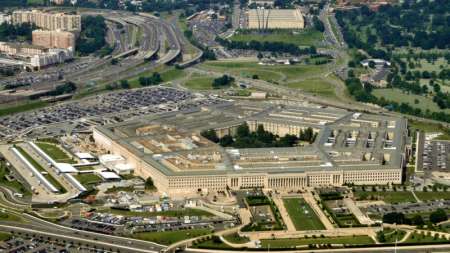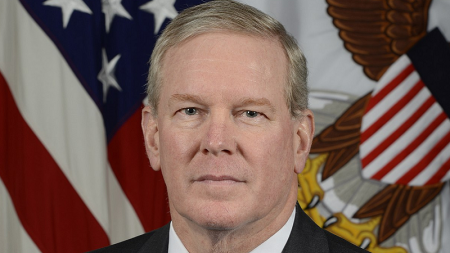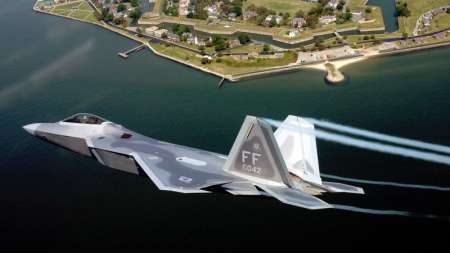Contractor CSRA is set to launch the Defense Information Systems Agency’s (DISA) milCloud 2.0 on Feb. 1–three months ahead of schedule–combining a commercially run cloud offering within the confines of DISA’s data center. In its first phase, milCloud 2.0 will offer scalable Infrastructure as a Service (IaaS) to customers from two locations. […]
While the military services and other Department of Defense components get on board toward greater adoption of cloud services, the Defense Information Systems Agency (DISA) doesn’t want them to forget about security, particularly on the part of cloud providers. […]
The Pentagon, which is getting within range of being a $2 billion-a-day operation and has more than $2 trillion dollars in assets and liabilities, is notably undergoing its first full financial audit. […]
The Department of Defense (DoD) says it’s getting ready for the big one, but in this case, it’s not talking about a kinetic attack measured in megatons. It’s referring to a cyberattack measured in terabits. […]
Who says things in Washington don’t move quickly? A decade after Congress initially authorized the position; the Pentagon will get its first Chief Managing Officer (CMO). John Gibson, the current Deputy Chief Managing Officer (DCMO), will step in as the first DoD CMO in February. A major target for new efficiencies, DoD has more than $2 trillion in assets and liabilities. […]
Russian hackers might get all the attention these days, but the Department of Defense (DoD) hasn’t forgotten about WikiLeaks and Edward Snowden. […]
The Department of Defense (DoD) caused a slight disturbance in the Force the other day when it pulled back an announcement related to its cloud computing initiative over some Star Wars-related acronyms. The memo announced the creation of the Central Cloud Computing Program Office, which would go by the acronym C3PO, and would support the Joint Enterprise Defense Infrastructure (JEDI) Cloud, Bloomberg reported. The memo was scrubbed of the Star Wars references and reissued. […]
In 2015, Defense Department (DoD) contractors that handle sensitive DoD information were given extra time to comply with new department cybersecurity regulations. That grace period now is up, and companies must meet these requirements in 2018. […]
President Donald Trump last week issued an Executive Order on veterans’ health care that included an announcement that the Department of Veterans Affairs (VA) would adopt the same electronic records systems as the Department of Defense (DoD), signing off on what was already a done deal. Emphasis on “deal,” because although the departments are on board with a project that could cost $10 billion over 10 years, history raises doubts as to whether a unified health records system can actually be achieved. […]
The Pentagon, well aware that private sector innovation has outstripped its own in key technologies, is expanding its courtship of industry with a new pilot program that encourages academic industry collaboration on what its calls “use-inspired basic research.” The program will concentrate on development projects aimed at creating applications that can be implemented in the field. […]
The Department of Defense’s (DoD) push toward greater adoption of commercial cloud computing could raise some questions for the military services and component agencies, including what type of cloud environment would work best while meeting unique DoD needs such as security and high-volume transactions. The Defense Information Systems Agency (DISA) took a stab at answering those questions last week while offering a plan for enterprise cloud adoption. […]
After years on the backburner, electronic warfare (EW) is moving up the ranks as an integral part of the Pentagon’s military focus. The Army last month received approval to move ground-based EW efforts into the Terrestrial Layer Intelligence System, joining cyber, signals, and other intelligence as part of the Multi-Function Electronic Warfare (MFEW) structure. The service wants to include airborne EW later this year. […]
The Intelligence Community wants to develop a kind of universal translator that will search documents across a full range of media and make sense of them for English-speaking analysts. […]
The White House wants to clear the way for Federal agencies to adopt commercial cloud computing, even if that means tweaking acquisition rules to help them get there. […]
Since 2001, the Department of Veterans Affairs (VA) has tried three different modernization programs for its healthcare system. So when the department announced another plan to modernize by adopting the same system as the Department of Defense (DoD), the Subcommittee on Information Technology was skeptical and interrogated them in a Dec.7 hearing. […]
Since blockchain first appeared in 2009 as the digital ledger for Bitcoin cryptocurrency transactions, it has steadily taken the online world by storm, in the process practically becoming a synonym for security. Even if a lot of people still don’t know what it is, they’re beginning to hear it more and more. IBM, for instance, has taken to mentioning “blockchain for security” in its TV ads. And in a sure sign of pending mainstream acceptance, a “Blockchain for Dummies” book is now available. […]
Department of Defense (DoD) officials have been framing Artificial Intelligence (AI) as the center of a “new space race,” citing its growing importance in military and geopolitical operations, the investments other countries such as China have been making in AI, and Russian President Vladimir Putin’s assertion that whoever takes the lead in this field will be “ruler of the world.” […]
The Defense Department (DoD) is leading the brain-computer interface charge within government, recently investing $65 million across six projects. Each of these projects will work to develop high-resolution neural interfaces and working systems that could help in sensory restoration, specifically in these projects with regard to sight and speech. The contractors–five research organizations and one private company–will work under the Defense Advanced Research Project Agency’s (DARPA) Neural Engineering System Design (NESD) program, which was launched in 2016 with the goal of developing an implantable neural interface able to deliver high-bandwidth data transfers between the brain and electronics systems. […]
The Army is forging ahead with deployment of its Big Data Platform (BDP), a move that underscores the Department of Defense’s (DoD) plans for using open-source software, commercial technologies, and cloud services to get a grip on the data it collects from a wide range of sources. […]
Artificial intelligence (AI) systems are getting awfully good at the Who, What, When, Where and even How for a variety of jobs, from military operations to financial transactions to medical diagnosis and treatment. But the Why is another story. […]
Pandemic threats such as Ebola, Zika, and avian flu are not only a danger to public health, but are also viewed as potential national security threats, as the National Intelligence Council, an arm of the Director of National Intelligence, points out in its 2017 report, Global Trends: Paradox of Progress. […]
For military analysts struggling to make proper use of millions of hours of full-motion video from drones, the cavalry will begin arriving this month, in the form of computer vision algorithms developed under the Department of Defense’s (DoD) Project Maven. […]
The Army and Navy recently announced that their Cyber Mission Teams were fully operational, and the U.S. Cyber Command now has all of their planned complement of 133 teams in business. With its people (totaling more than 6,000 service members and civilians) in place, U.S. cyber forces can now look to machines to help carry out effective operations in the cyber domain. […]
The Department of Defense (DoD) is cooking up big plans for blockchain technology, the digital ledger best known for its support of cryptocurrencies such as Bitcoin and Ethereum. The technology’s decentralized, encrypted approach holds promise for a variety of secure functions in addition to financial transactions, from cyber defense and distributed communications to protecting the digital supply chains used by deployed forces for 3D printing. A Navy officer on the Naval Innovation Advisory Council has written that blockchain could “revolutionize” the way military operations over the next decade. […]
DOD’s Defense Innovation Unit Experimental (DIUx) recently awarded C3 IoT a multiyear contract to develop an AI-based data management platform for predictive maintenance on aircraft systems and components, beginning with the Air Force’s E-3 Sentry (AWACS) plane and the F-16 fighter. […]
Congress wants the Defense Department (DoD) to elaborate on its growing interest is blockchain technology, the secure digital ledger system that can be applied not only to protect financial transactions, but also many other operations such as defending against cyberattacks, protecting logistics supply chains, and securing communications with aircraft and satellites. […]
President Donald Trump nominated Michael Griffin to be principal deputy under secretary of defense for Acquisition, Technology, and Logistics on Oct. 27. […]
The White House announced that John Zangardi will serve as the new chief information officer for the Department of Homeland Security. Zangardi is currently serving as the acting CIO at the Department of Defense. He is leaving the DoD to replace Richard Staropoli, who unexpectedly resigned as DHS CIO in August. […]
Federal IT leaders are shifting focus from trying to secure every system to prioritizing the systems that need the most security controls. “We realized that no matter how much we protected our systems, something could happen,” said Thresa Lang, deputy director of the Navy Cybersecurity Division, at CISQ’s Cyber Resilience Summit on Oct. 19. […]
The Department of Defense is recognizing National Cybersecurity Month by expanding cybersecurity education to families of service members. “This is not just an IT issue,” said Essye Miller, deputy CIO for cybersecurity and chief information security officer for DoD. “Everyone that’s operating on the network has a responsibility.” […]


























